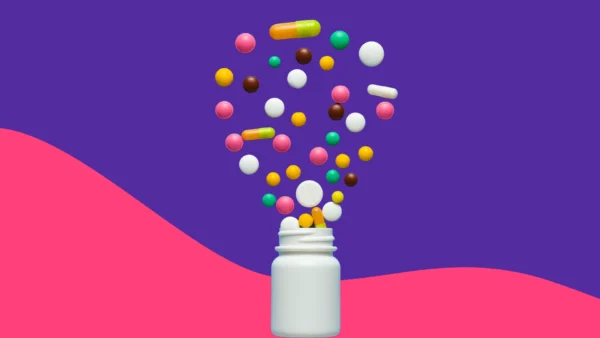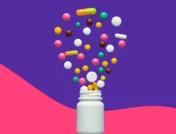Implementing a spring cleaning initiative in your pharmacy can be a refreshing reset for you and your staff. Spring is an excellent time for housekeeping in your pharmacy to help reinvigorate your team and increase productivity. Beyond helping you maintain a sparkling clean pharmacy, this article will suggest ways to update and refresh your pharmacy to help your patients receive better care.
7 ways to spring clean your pharmacy
It’s a great time of year to neaten your workspace, but that’s not all. Use this period to refresh your workflow and reconnect with your team—with this pharmacy cleaning checklist.
1. Reimagine workflow
Take some time to assess what is and isn’t working in your daily pharmacy operations. What areas of workflow cause bottlenecks? What can be done to improve it? Perhaps adding another computer or workstation would help. Discuss new ideas on filling, customer service, and managing the workday with your team.
In addition, ask yourself: Could new automation systems help optimize workflow? Explore new options and technologies for patient safety, such as dispensing cameras and barcode systems, to minimize pharmacy errors. Be sure to update your inventory system to include all barcodes and new NDCs. While your corporate office may not allow complete overhauls, you can think of smaller ways to improve your store, like posting checklists or holding periodic staff trainings.
RELATED: Medication error statistics
2. Tidy inventory
Your spring cleaning should encompass reviewing your inventory. Spend some time evaluating your on-hand medications and run reports to help consider the following:
- Should this medication be moved to the “fast-movers” area?
- When was the last time I dispensed this medication?
- Do we need to add more shelves to this area?
- Are all medications properly stored
Determine what medications you need to replenish and consider adjusting your par levels if you do not dispense medication as often as you once had. Be sure to return or dispose of expired medicines appropriately. Ensure that shelves are organized so that drugs expiring soonest are in the front.
Pharmacy technicians often dread pulling outdated medications each month. Brainstorm better ways to make this happen. Consider making a system to identify medications expiring soon, such as adding a colored sticker or wrapping a rubber band around the container, so they are easily identifiable. Consider making a spreadsheet to track which sections of the pharmacy have been completed so far to prevent missing or re-checking the same areas.
3. Control your controls
If your biennial controlled substance inventory is due this year, now is the time to start preparing. Ensure all controlled substances are stored properly. Schedule adequate staff to complete the inventory before or after operational hours (according to your state’s requirements). Consider new pharmacy organization ideas, such as back-counting bottles or purchasing a larger safe.
4. Update OTC products
Some new over-the-counter (OTC) products may be added to your store’s inventory. Review your OTC shelves to pull expiring products and identify which ones are not selling. Spring arriving also means the emergence of seasonal allergies. Stock up on OTC allergy relief products to make sure you’re ready for when the pollen strikes.
Consider adding new products and get ready to answer questions about them. For example, over-the-counter hearing aids are now FDA-approved—is your pharmacy stocked and ready? This is an opportunity to educate yourself and your staff on new technology and patient care initiatives.
5. Declutter your workspace
Removing clutter can give you and your staff a sense of calm by having a clean workspace. Further, having unnecessary clutter around the pharmacy can impair patient safety. Encourage your team to return stock bottles to the shelves as soon as they are done using them. Having multiple stock bottles at your workstation can increase the risk of an error.
Look through any piles of paperwork and either file or shred them. Box up and clearly label any old prescriptions and other files to prepare for long-term storage according to state and federal regulations.
While you’re at it, look at the signs hanging up around the pharmacy and patient waiting area. Over time, signs can fade and be difficult to read. Replace signs as necessary to ensure they are accurate and aesthetically appealing. Ensure all pharmacy licenses are up-to-date and make sure current store hours are clearly posted at the door and drive-through window.
6. Consider your staffing needs
For those who are pharmacy managers, spring is a great time to hire more help. Assess whether you have adequate staff to cover your technicians’ summer vacations. You may have an intern that is graduating soon. Consider hiring new technicians, interns, or even a newly graduated pharmacist to cover scheduling gaps in the upcoming months and bring fresh perspectives.
If you don’t already complete staff performance evaluations throughout the year, spring is a good time to do it. If it has been a while since your staff received pay increases, schedule to meet with anyone who is overdue. Devise a plan for training and supporting staff members not meeting expectations. Give some thought to succession planning: Do you have a technician who could take over as a new Lead Technician if necessary? If not, start delegating more responsibilities to other technicians to see how they handle it.
After a busy winter, spring is a great time to let your pharmacy staff know they are appreciated. Consider planning a fun team-building activity to boost morale or take your staff out for dinner after closing to help them feel valued.
7. Tidy up technology
Spring-clean your technology by updating your pharmacy’s computer software to ensure you use the latest version. Take stock of all your registers, debit readers, computers, printers, and fax machines. Are they working properly? If not, schedule any necessary maintenance or order new equipment.
Within your pharmacy’s software system, consider running reports to determine which patients might be eligible for enrollment in new services, such as a medication synchronization program to help patients get the most out of their pharmacy visits. Make spring a time to focus on updating patient contact information and enrolling in text alerts.
The arrival of spring marks a time for rebirth, growth, and a fresh start. Pharmacists can take this as an opportunity to reinvent workflow, purchase new inventory, revitalize or expand their staff, and overall implement positive changes for the benefit of their pharmacy and patients.











